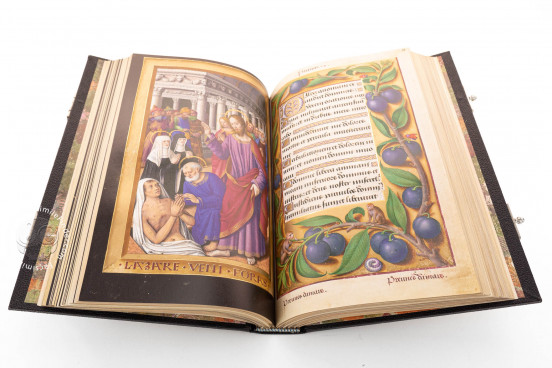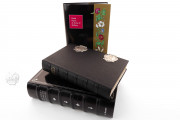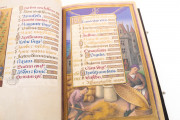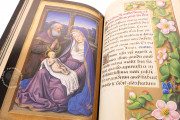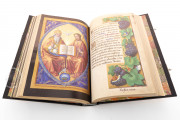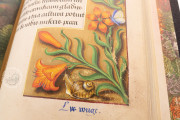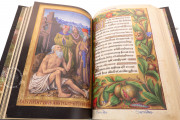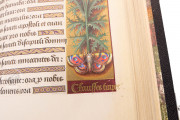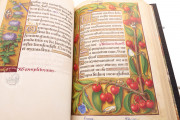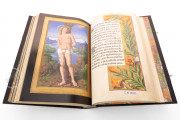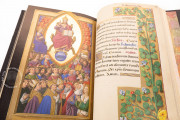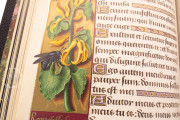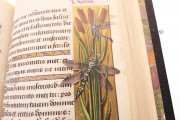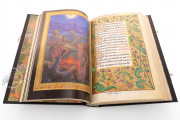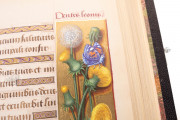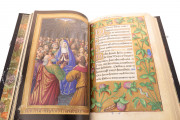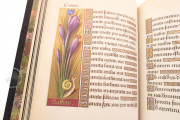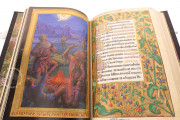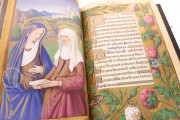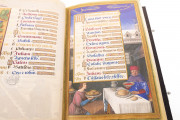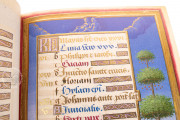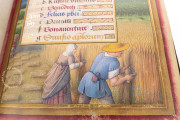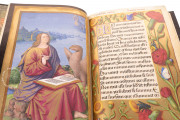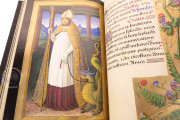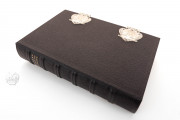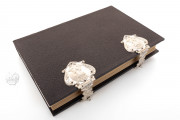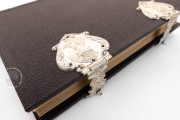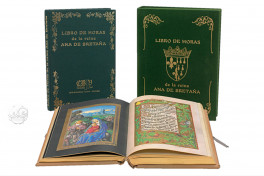The Great Hours of Anne of Brittany is one of the most impressive Renaissance manuscripts from Tours, centre-west France. The codex, also known as Las Grandes Horas de Ana de Bretaña, was written and illuminated in the first quarter of the sixteenth century and features forty-seven beautifully illuminated full-page miniatures, one historiated initial, twelve calendar pages, and over 330 representations of plants along the borders making it one of the most remarkable book of hours ever made.
The Great Hours of Anne of Brittany and Jean Bourdichon
Given the size of the manuscript – together with the style of the miniatures – the iconographic apparatus betrays an association with panel painting distancing itself from the art of book painting. The artist behind such an outstanding iconography is identified in the figure of Jean Bourdichon whose master's technique (Jean Fouquet) can also be noticed.
As a result of the mastering of pictorial techniques such as use of foreground, realism, and perspective, the miniatures have been considered altarpieces rather than "only" miniatures. Scenes such as the Nativity (fol. 51v), the Flight to Egypt (fol. 76v), and Juda's kiss (fol. 227v) are considered some of the most beautiful miniatures in the history of book illumination.
Mastery of Night Scenes
In all three the artist shows his mastery of night scenes, even echoing Leonardo da Vinci's Virgin of the Rocks. In Juda's kiss the play of light and shade is unparalleled depicting lamps and torches that lead the gaze of the onlookers.
To create this atmosphere of dark and light Jean Bourdichon makes a competent use of gold which highlights important details and play an important role in bringing light to the scene.
A Private Devotional Book and a Herbal
Another feature that makes the Great Hours of Anne of Brittany is the presence of a comprehensive and extensive botanical treatise including more than 330 plants provided with their scientific name (in Latin) and their French one.
The herbal also features lovely decorations, such as vividly-depicted insects and other kinds of small animals including grasshoppers, frogs, turtles, bees, etc. The artist seems to borrow from the preceding Flemish tradition of book painting characterized by the richly decorated borders depicting realistic representations of wild life.
Although the commissioner remains unknown, it seems clear that the recipient of the work – as it is also suggested by the title – was Anne of Brittany, twice Queen of France, once as wife of Charles VIII and once as Louis XII's.
The Cabinet of Curiosities
The life of the manuscript seems to be accounted for from the very beginning, for after the Queen Anne died in 1514, her husband Louis XII – extremely fascinated by it – had it moved to the so-called Cabinet des Curiosities (Cabinet of Curiosities) at the Versailles Palace.
Subsequently, the manuscript, having a similar effect on Napoleon III, was part of an exhibition for twenty years (from 1852 to 1872) at the Musée des Souverains in the Louvre. Eventually, it was re-allocated to the Bibliothèque nationale de France, of which is one of the most cherished treasures.
We have 2 facsimiles of the manuscript "Great Hours of Anne of Brittany":
- Libro de Horas de la Reina Ana de Bretaña facsimile edition published by Club Bibliófilo Versol, 2003
- Las Grandes Horas de Ana de Bretaña facsimile edition published by M. Moleiro Editor, 2008

